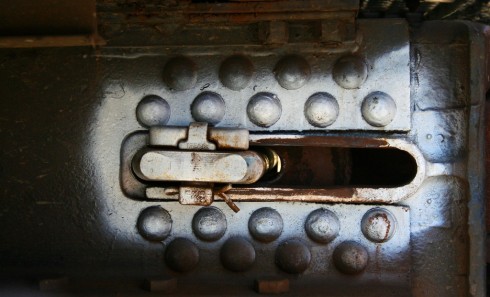Current Lebanese Literature Feature
 The always interesting online Pakistani literary magazine The Missing Slate has just published it’s latest issue focusing on Literature from Lebanon, including work by Elias Khoury, Etel Adnan, Wadih Saadeh, Abbas Beydoun, Alexandra Chreiteh & others. You can check it our here. Below, the opening paras of the editors’…
The always interesting online Pakistani literary magazine The Missing Slate has just published it’s latest issue focusing on Literature from Lebanon, including work by Elias Khoury, Etel Adnan, Wadih Saadeh, Abbas Beydoun, Alexandra Chreiteh & others. You can check it our here. Below, the opening paras of the editors’…
…introduction to the Lebanese literary feature
By Marcia Lynx Qualey amd Yasmina Jraissati
Literary traditions from the area we now call Lebanon have been shape-shifting for a thousand years and more.
Although poetry was the region’s first love, the modern novel began to coalesce with the brilliant and peripatetic Ahmad Faris al-Shidyaq’s four-volume novel ‘Leg Over Leg’ (1855). ‘Leg Over Leg’, recently translated by Humphrey Davies and published by NYU Press, is a monument to Lebanon’s place as a crossroads, interweaving as it does both Western and Arabic story-building techniques. Al-Shidyaq was himself a shape-shifter: raised as a Lebanese Christian, he traveled widely and later converted to Islam. Although he writes that he was not a “chain man” — that his novels were neither linked directly to those of the past nor meant to directly influence the future — his wit and inventiveness stand out as a guiding literary light.
This special issue gives a small glimpse of a rich vein in contemporary Lebanese literature, which addresses universal questions of memory, identity, violence, and gender.By the end of the nineteenth century, Lebanese novelists were experimenting with a variety of different techniques. The most popular author was almost certainly Jurji Zaydan (1861-1914), who left Lebanon as a student and spent much of his life in Egypt. Zaidan wrote fast-paced historical novels that were under-appreciated by critics and scholars, but have been read and loved by generations of fans both in their original Arabic and in translation.
Egypt was home to most of the mid-twentieth century’s big Arabic literary stars: Taha Hussein, Tawfiq al-Hakim, Naguib Mahfouz, and Yusuf Idris. But when the 1960s generation authors in Egypt were challenging these earlier novels, experimenting with meaning and form, so were ‘60s-generation authors in Lebanon, led by experimenters like Elias al-Diri and Youssef Habchi El-Achkar.
Also significantly in 1960s Beirut, publishing houses were flourishing. Books that couldn’t be published in other Arab countries for one reason or another often found their way to Lebanon, which established itself as a capital of Arab publishing. This notably enriched the Lebanese literary scene.
From the middle 1970s to 1990, civil war disrupted life and the course of Lebanese writing. Massacres and bombings disfigured the Lebanese landscape. Yet this boiling crucible also brought the world some of its most celebrated contemporary novelists: Elias Khoury and Hanan al-Shaykh (writing in Arabic), Rawi Hage and Rabih Alameddine (writing in English), and Amin Maalouf (writing in French), as well as many more. These novelists draw both on contemporary forms and on deep Arab literary roots, ranging from the sophisticated wordplay of 10th century Iraqi poet al-Mutanabbi to the page-turning savvy of the ‘Thousand and One Nights’.
Some Lebanese authors, such as world-acclaimed Elias Khoury, were part of the fighting for a time. He wrote his novel ‘White Masks’ (1981) and the novella ‘Smell of Soap’ (1981) during the country’s Civil War. An excerpt from ‘Smell of Soap’ has been translated by Ghada Mourad for the first time for this issue.
[ctd…]

 Poasis II: Selected Poems 2000-2024
Poasis II: Selected Poems 2000-2024 “Todesguge/Deathfugue”
“Todesguge/Deathfugue” “Interglacial Narrows (Poems 1915-2021)”
“Interglacial Narrows (Poems 1915-2021)” “Always the Many, Never the One: Conversations In-between, with Florent Toniello”
“Always the Many, Never the One: Conversations In-between, with Florent Toniello” “Conversations in the Pyrenees”
“Conversations in the Pyrenees” “A Voice Full of Cities: The Collected Essays of Robert Kelly.” Edited by Pierre Joris & Peter Cockelbergh
“A Voice Full of Cities: The Collected Essays of Robert Kelly.” Edited by Pierre Joris & Peter Cockelbergh “An American Suite” (Poems) —Inpatient Press
“An American Suite” (Poems) —Inpatient Press “Arabia (not so) Deserta” : Essays on Maghrebi & Mashreqi Writing & Culture
“Arabia (not so) Deserta” : Essays on Maghrebi & Mashreqi Writing & Culture “Barzakh” (Poems 2000-2012)
“Barzakh” (Poems 2000-2012) “Fox-trails, -tales & -trots”
“Fox-trails, -tales & -trots” “The Agony of I.B.” — A play. Editions PHI & TNL 2016
“The Agony of I.B.” — A play. Editions PHI & TNL 2016 “The Book of U / Le livre des cormorans”
“The Book of U / Le livre des cormorans” “Memory Rose Into Threshold Speech: The Collected Earlier Poetry of Paul Celan”
“Memory Rose Into Threshold Speech: The Collected Earlier Poetry of Paul Celan” “Paul Celan, Microliths They Are, Little Stones”
“Paul Celan, Microliths They Are, Little Stones” “Paul Celan: Breathturn into Timestead-The Collected Later Poetry.” Translated & with commentary by Pierre Joris. Farrar, Straus & Giroux
“Paul Celan: Breathturn into Timestead-The Collected Later Poetry.” Translated & with commentary by Pierre Joris. Farrar, Straus & Giroux